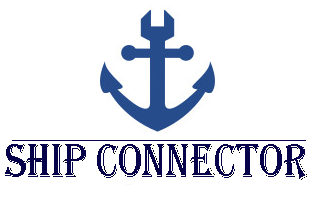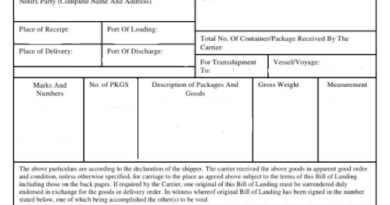Cargo Dues, Tonnage Dues and Port Dues

Contents
Cargo Dues, Tonnage Dues and Port Dues
Cargo Dues – (CD)
Cargo Dues – (CD) – (also known as Wharfage) is a fee levied by Port Authority to the users for using the port facilities which is given by the port authority for loading/discharging of the cargo and keeping the cargo on the port.
Cargo Dues are generally born by the (exporters, importers or shipping lines).
This fee is generally fixed and is charged for using port infrastructure.
Cargo Dues, Tonnage Dues and Port Dues
Tonnage Dues
Tonnage Dues : It is the fees paid by the vessel operator to a port for the using the port .
This is generally calculated on the NRT (Net registered tonnage) of the ship as per vessel tonnage certificate.
Tonnage Dues are charged by the port to:-
1.Maintain port infrastructure
2.Entry channels
3.Facilities used of like buoys,moorings etc
Cargo Dues, Tonnage Dues and Port Dues
Port Dues
Port Dues : It is a fees charged by the port to all ships for the period of their stay in the port ,usually it is calculate from the period ship enters the port till the time it leaves the port.
Port Dues are calculated on the GRT (Gross registered tonnage) of the ship as per vessel tonnage certificate.
Port dues varies from port to port.
Light Dues
Light Dues:-
According to the Gazette Notification dated 08.09.2000, issued by the Ministry of Surface Transport (Department of Shipping), Ships engaged in International Trade arriving at or departing from any Indian Port are required to pay light-dues @ Rs. 8/- per ton.
Section 13 of the Light House Act, 1927– It empowers the Proper Officer of Customs to recover the light-dues.
As per Section 10 (2) of the Act, the light-dues paid by a vessel are valid for 30 days from the time of payment.
Light-dues is paid by the Agents on the NRT (Net Register Tonnage) of the Ship. Ships carry containers in holds as well as on the deck.
In terms of Section 12 (1) of the Light House Act, 1927, All that Ships which uses the open space such as deck for carrying containers/cargo shall pay light-dues for all such spaces utilized for carrying cargo.
Gross Tonnage or Gross Register Tonnage – GRT) means the total volume of the Ship and Net Tonnage or Net Register Tonnage –NRT means the total volume of the ship where cargo can be loaded or the cargo carrying capacity of the Ship. The GRT and the NRT of the Ships assessed in accordance with International Convention of Tonnage Measurement of Ships 1969 and entered in the International Tonnage Certificate, 1969 (ITC, 69) or the Tonnage Certificate issued by the Registration Authority or an Administration of a Flag State normally excludes the volume of spaces open to weather and sea.
Rule 10 read with Appendix VII of the Merchant Shipping (Tonnage Measurement of Ships) Rules, 1987, framed under Section 74 (2) of the Merchant Shipping Act, 1958 deals with ascertainment of tonnage in respect of ‘Deck cargo and cargo in other spaces’. Tonnage of such spaces, not included in the computation of Net Tonnage, so utilized for carrying cargo shall be determined and added to the Ship’s Net Tonnage for the levy of light-dues.
If the volume of such utilized spaces is determined in cubic metres it shall be divided by 2.83 for arriving at the Tonnage figure and in case the volumetric capacity is in cubic feet it shall be divided by 100 to arrive at the Tonnage figure.
General cargo or any other cargo which is carried as Deck Cargo, or cargo carried in spaces not included in NRT of the Ship, the volume and tonnage of such spaces declared by the Owner or Master of the Ship is acceptable by the Custom officials.
Owner or the Master of the Vessel shall provide documentation with enough information to confirm the ad-measurement.
If the Owner or the Master of the Ship fails to provide adequate information to the satisfy concerned authority ,Surveyor service shall be availed to ascertain the tonnage and the Vessel must accept the calculation of the Surveyor.
The Deck Cargo declaration contains details of the number of containers, sizes, inner volumetric capacity of the containers and computed Tonnage for the purpose of assessment of light-dues.
The same applies to the Ships leaving the Port. The vessel must provide cubic capacity and the tonnage of the General cargo or any other cargo carried as Deck Cargo under the ‘ Deck Cargo Declaration ‘. The Master of the Ship shall also provide information of any additional space other than NRT that is utilized for carrying cargo.
Berth Hire
Berth Hire Charges For Vessels
All vessels are charged Berth hire as Per GRT(Gross register tonnage) Per day which is 24 hours
vessels are charged as per below category
a)Vessels Up to 30,000 GT
b) Vessels Above 30,000 GT
Minimum charge of USD x per vessel per day.
NOTE:
1) A minimum charge levied to all vessels alongside berths for 24 hours, is charged as per the above rates.
For stay beyond 24 hrs, every eight hours or part thereof is counted as a shift and charged at the rate of 1/3 to that of charges as applicable and stated above as a shift charge.
2) When a vessel is allotted a berth on priority /special basis, all such vessels are required to pay priority berth hire charges, which are double to that of the normal berth hire charges or as decided by the port authorities.
3) In case of ousting priority granted to any vessel, the berth hire charges are four times to that of normal berth hire charges.
4) shifting charges shall be to account of the vessel receiving Ousting priority. These premium service vessel related charges override all long term/special Contracts/ arrangements entered unless specified particularly in their Agreements.
5) Vessel which continues to occupy the berth in the port for more than two hours after cargo operations gets complete and vessel stay without permission is liable to be charged an additional berth hire charges at the rate of USD X per hour.
6) Naphtha carrying vessels are chargeable double berth hire.
7) Day shall be calculated as 24 hours from the time mooring at a berth is completed.
8) During course of cargo operations ,the Importers/Exporters (Receivers/Shippers) or their agents ,shall ensure that no cargo falls into the navigational waters, failing which the penalty as levied and to be borne by the agents.
9) Ammonia cargo carrying vessel ,charges for standby pilot and are charged from berthing till un-berthing at USD X for 24 hours.
10) Vegetable oil barge are charged channel fee of Rs. X .
SHIFTING CHARGES:
a) Berth to berth:
All vessels:
a) Without Tug(s) &without Pilot : Usd X
b) Without Tug(s) & with Pilot : -Usd X
c) With Tug(s) & Without Pilot : Usd X
d) With Tug(s) & With Pilot : Usd X
b) Shifting berth to anchorage or anchorage to berth:
Shifting of the vessel includes Mooring, UN-mooring ,using one or more tugs are levy of tug hire charges ,if additional tugs are used additional charge is levied.
Light Dues :-credit tariffauthority.gov.in
To Read About Notice of Readiness (NOR) Click Here
Feedspot
Feedspot is a collection of blogs and websites in one place.
One can Really save time by not visiting each website separately to see what’s new.
To read interesting Marine Blogs from 40 different website click below link





Nice information…just like to ask about trimming pours ,can you please elaborate in detail about it.